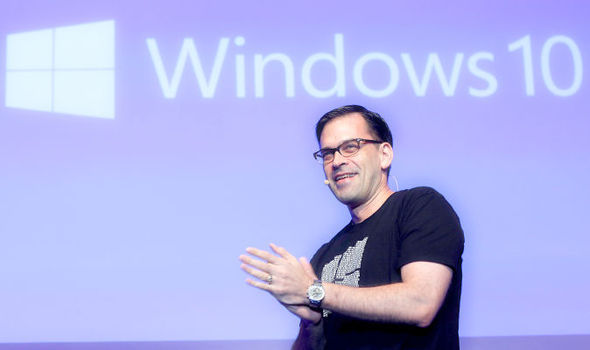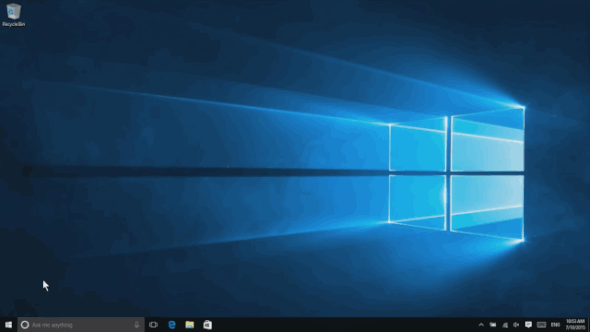 |
| The 5 WORST new features in Windows 10 |
THERE is a lot to like about Microsoft's new unified operating system. Unfortunately – there is A LOT to dislike too.
Microsoft rolled out its latest operating system, Windows 10, earlier this summer.
The free operating system, which unites the user experience across desktop PCs, tablets and smartphones, is now running on 110 million devices across the globe.
There are a lot of useful new features baked into Windows 10 – which you can learn to master with our handy guide – but there are also a lot of very problematic new additions.
NewsNewsBlog.blogspot.com has rounded up the WORST new features in Windows 10.
#1 Solitaire Is No Longer Free-To-Play
They say there is no such thing as a free lunch – and swathes of Windows 10 users quickly discovered this brand-new fee hidden within the latest Microsoft release.
Windows 10 has added in-app purchases to its preinstalled Solitaire app.
Unlike previous versions of the classic card game bundled with the likes of Windows 95 and XP – the latest update comes packed with advertisements.
To get rid of the distracting banner ads, or to earn some in-game currency, users can pay a fee of $1.49 per month (around 90p) or $9.99 per year (some £6.50).
According to TIME magazine, who first unearthed the new charges, this is not the first time Microsoft has tried to push users to pay for Solitaire.
The firm released a premium version of the game alongside Windows 8, although it was not preinstalled with the operating system.
 |
| The classic free-to-play Microsoft game carries a price-tag in Windows 10 |
A spokesperson for Microsoft told NewsNewsBlog.blogspot.com: "Microsoft Solitaire has been free to play for the past 25 years on Windows, and continues to be free to play on Windows 10.
"Users can access and play everything within the game for free, including new Premium features like Daily Challenges and Star Club.
"The Microsoft Solitaire Collection game experience and Premium Upgrade features such as Double Coins for Daily Challenges, and removal of advertisements, is identical to the Windows 8 version that has been available for years."
#2 Location Date Isn't Accurate
Windows 10 brings talkative virtual assistant Cortana to the desktop.
Users can ask the digital assistant to send text messages, track aeroplane flights, search the web and even order an Uber to the next event on your calendar.
Unfortunately Microsoft is having trouble pin-pointing your exact location.
Users have complained that a number of key apps bundled with the new operating system, including Cortana and Maps, fail to work correctly because of issues with location data.
 |
| Some 110 million devices are now running on Windows 10, Microsoft has announced |
A program manager at Microsoft has posted a blog post to apologise for the "highly inaccurate" location data provided by the operating system.
She reassures Windows customers that the firm is hard at work on a patch, which should resolve inaccuracies around the analysing wifi for an exact location.
"We’ve investigated and identified some issues we’re working on improving in future builds," Analy wrote in the company forums.
"We know how frustrating it is when your location is wrong so here’s some more details if you’re interested.
"Most apps rely on the location platform in Windows to provide the location information.
"Depending on the hardware available on each device, the availability of the location information and its accuracy will vary.
"Wi-Fi based positioning is usually very good, typically in the range of 50m-150m of accuracy.
 |
| Windows 10 combines visual queues from Windows 7 and Windows 8, and brought back the Start Menu |
"We have uncovered some issues with certain Wi-Fi hardware in Windows 10 that results in a failure getting the positioning from Wi-Fi and thus falling back to the much less accurate IP based positioning.
"This causes the location shown to users to be incorrect or highly inaccurate even when the device is connected to Wi-Fi and will impact some users after upgrading from a previous version of Windows to Windows 10. We’re actively working on this problem and hope to have it fixed in future builds."
#3 Windows Tracks Your Every Keystroke
Microsoft fans were shocked to discover a keylogger in the final commercial version of the operating system.
Keyloggers track every keystroke made on the Windows 10 device in an effort to try and improve Microsoft products and services.
Voice data is also collected and analysed every time virtual assistant Cortana is used on the desktop operating system.
It was thought that Microsoft would only include the key logger within the Technical Preview versions of the operating system, so that it could use the vast data supplied by beta testers to tweak the final release.
However the slightly creepy software has now been included in the commercial version of Windows 10, PC World has confirmed.
Explaining the role of the spyware in its FAQ, Microsoft writes: "When you interact with your Windows device by speaking, writing (handwriting), or typing, Microsoft collects speech, inking, and typing information—including information about your Calendar and People (also known as contacts)…”
Fortunately, Windows 10 users can switch off the key logging.
Simply navigate to the Start Menu, then tap Settings.
Privacy is in the third row of the Settings window.
Once you are in the Privacy menu, tap on General, then under Send Microsoft info about how I write to help use improve typing and writing in the future – toggle the setting to Off.
Then, under the Speech, Inking and Typing menu, which is located four rows beneath General – click Stop getting to know me.
This will turn off the speech tracking through dictation and Cortana.
#4 Microsoft Edge
The redesigned Microsoft web browser has been built from the ground-up for the new operating system.
However a number of missing features have kept the Internet Explorer replacement from gaining any real traction amongst Windows 10 users.
Microsoft is still desperate to move users from rival web browses – and will even pester users who try and change the default browser.
But new data has revealed that Windows 10 users are reluctant to make the transition.
Google's Chrome browser is still the most popular choice on Windows 10, according to San Francisco-based firm Quantcast.
 |
| Google's Chrome browser is still the most popular tool to browse the web on Windows 10 |
The Google browser – which has a number of hilarious hidden features – accounts for a staggering 70 per cent of all browser activity originating from Windows 10.
But it's not all bad news for Microsoft Edge.
The redesigned browser did see a small bump when Windows 10 rolled out worldwide – peaking at 16 per cent of all browser activity from the OS.
Meanwhile the outdated and infamously infuriating Internet Explorer accounts for a meagre 5 per cent of traffic from Windows 10 users.
Software Engineer Jackson Newhouse, of Quantcast said: "The wide release of Windows 10 did initially bump Edge’s market share from 12 per cent to 16 per cent.
"However, this increase was temporary, with Chrome recovering from temporary losses and reaching over 70 per cent market share of Windows 10, higher than the 63 per cent it pulls in on Windows 7 and 8.
"More and more users are using Windows 10 every day, and most have shifted off of the old Internet Explorer.
"However, that movement hasn’t entirely been towards Edge, with a number of users choosing Chrome instead.
"Microsoft may be able to make further inroads into the browser market with Edge, but it’ll take more than a new operating system to unseat Chrome’s dominance."
Edge is the default browser that ships with Windows 10 – and is even promoted during the upgrade process.
Unless you are actively reading, checking and carefully choosing your options during the installation, the operating system will swap any rival browsers you'd set as the default on Windows 7 or 8.1 to Microsoft Edge.
#5 Pay To Play A DVD
Microsoft, which removed its free Windows Media Player software suite from its new operating system, has released a new app to help Windows 10 users play their DVDs.
The new app – simply dubbed Windows DVD Player – will enable PC owners to play their physical media.
The app cannot play digital files but does, according to its app listing, offer "simple controls for disc navigation".
 |
| The Windows DVD Player offers very sparse functionality, limited to basic physical media playback |
Although the basic DVD Player app is currently free – this will only be the case for a limited time.
Microsoft states Windows DVD Player will only be "free for a limited time," but does not clarify when users can expect to shell out for the app.
The app FAQ adds: "The timing has not been finalised yet.
"It will end at or before the free Windows 10 upgrade offer."
After that unspecified time Microsoft will charge users an eye-watering $14.99 – or some £9.50 – for Windows DVD Player.
That's a lot of money – especially when there are a number of open source alternatives, such as VLC, with a much more advanced feature-set, not least of which is the ability to play digital files.

Post a Comment Blogger Facebook Disqus